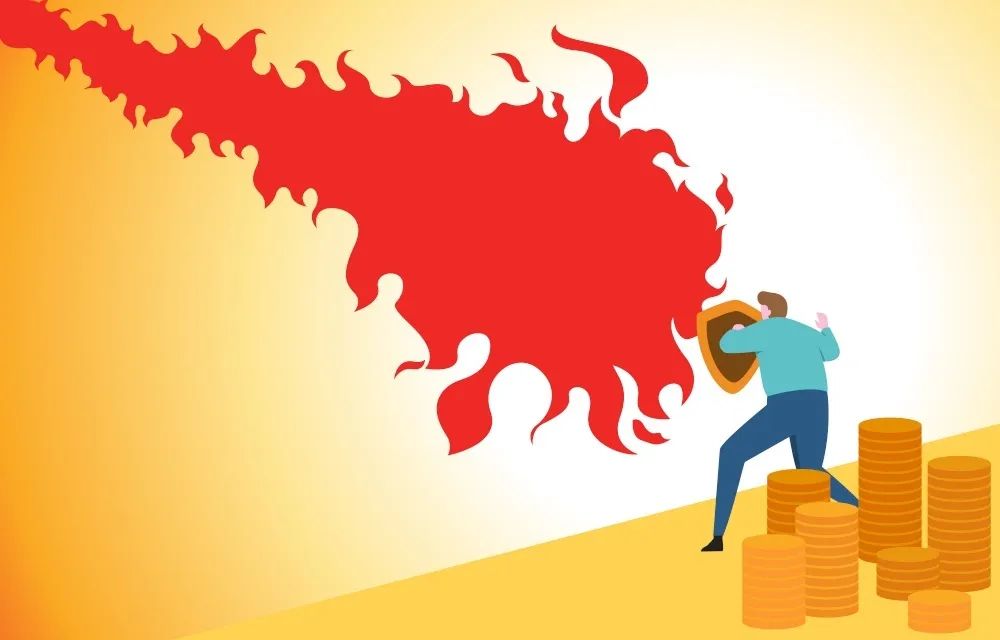Review of the 6+3 Major Flame Retardant Mechanisms for Rapid Mastery of Flame Retardant Modification
The combustion of polymers is a highly intense and complex thermo-oxidative reaction, characterized by the emission of dense smoke or fierce flames.

Flame retardants are a type of additive that can prevent plastics from igniting or inhibit the spread of flames.The flame-retardant effect of flame retardants is to prevent or inhibit the rate of physical or chemical changes during the combustion process of polymer materials.Specifically, the flame-retardant effect is mainly reflected in the following aspects.
Flame Retardant Effects of Flame Retardants in the Combustion Process of Polymers
Flame retardant flame retardancy -- endothermic effect
The effect of endothermic absorption is to make it difficult for the temperature of polymer materials to rise.
For example, borax contains 10 molecules of crystallization water. Releasing this crystallization water requires the absorption of 141.8 kJ/mol of heat, and this endothermic process inhibits the rise in material temperature, thereby producing a flame-retardant effect.
Flame retardant flame retardancy -- covering effect
Its function is to form a stable coating at higher temperatures or decompose into a foamy substance that covers the surface of polymer materials. This makes it difficult for the heat generated by combustion to penetrate the material, and prevents the flammable gases produced by the thermal decomposition of the polymer material from escaping. It also acts as a barrier to air, thereby inhibiting the material's decomposition and achieving a flame-retardant effect.
Flame Retardant Flame Retardancy--Dilution Effect
This type of substance can generate a large amount of non-combustible gas during thermal decomposition, diluting the combustible gases produced by the polymer material and the oxygen in the air, preventing the concentration from reaching a flammable range.
Flame retardant flame retardancy -- transfer effect
Its function is to alter the thermal decomposition pattern of polymer materials, thereby inhibiting the production of combustible gases.
Flame retardant flame-retardant--inhibition effect
Capture active intermediates such as HO· and H· in combustion reactions to inhibit free radical chain reactions, thereby reducing the combustion rate until the flame is extinguished.
Flame retardant flame-retardant—synergistic effect
Some materials have little or no flame-retardant effect when used alone, but when combined with other materials, they can achieve enhanced flame-retardant performance. For example, antimony trioxide used together with halogen compounds.
Flame retardant mechanisms of flame retardants in the polymer combustion process.
Flame Retardant Mechanism -- Gas Phase Flame Retardant Mechanism
Gas-phase flame retardant systems refer to the flame-retardant effect that interrupts or delays the chain combustion reaction in the gas phase. Gas-phase flame retardancy mainly includes:
Flame-retardant materials can produce free radical inhibitors when heated or burned, thereby interrupting the combustion chain reaction.
When subjected to heat or combustion, flame-retardant materials generate fine particles that can promote the combination of free radicals to terminate the chain combustion reaction.
3. Flame-retardant materials release a large amount of inert gases or high-density vapor when heated or burned.
Condensed phase flame retardant mechanism
Condensed phase flame retardancy refers to the flame retardant effect that delays or interrupts the thermal decomposition of flame retardant materials in the condensed phase. Condensed phase flame retardancy mainly includes:
Flame retardants in the condensed phase delay or prevent thermal decomposition that can produce combustible gases and free radicals.
In flame-retardant materials, inorganic fillers with higher specific heat capacity make it difficult for the material to reach the thermal decomposition temperature through heat storage and conduction.
3. The flame retardant absorbs heat during thermal decomposition, slowing down or stopping the temperature rise of the flame-retardant material.
When flame-retardant materials burn, a porous carbon layer forms on their surface. This layer is difficult to ignite, provides thermal insulation, blocks oxygen, and also prevents flammable gases from entering the combustion zone.
Flame Retardant Mechanism -- Interrupting Heat Exchange Flame Retardant Mechanism
The mechanism of interrupting heat exchange flame retardancy refers to carrying away part of the heat generated by the combustion of flame retardant materials, causing the material to not maintain the pyrolysis temperature, and thus unable to continue producing combustible gases, leading to self-extinguishing of the combustion.
【Copyright and Disclaimer】The above information is collected and organized by PlastMatch. The copyright belongs to the original author. This article is reprinted for the purpose of providing more information, and it does not imply that PlastMatch endorses the views expressed in the article or guarantees its accuracy. If there are any errors in the source attribution or if your legitimate rights have been infringed, please contact us, and we will promptly correct or remove the content. If other media, websites, or individuals use the aforementioned content, they must clearly indicate the original source and origin of the work and assume legal responsibility on their own.
Most Popular
-

EVA Morning Prices on September 12: Most of the Market Holds Steady, Highest Rise of 50 Yuan
-

Domo Chemicals Files for Bankruptcy Protection in Germany! B. Braun Launches New Supply Assurance Program
-

Vynova's UK Chlor-Alkali Business Enters Bankruptcy Administration!
-

[PET Weekly Outlook] Polyester Bottle Chips Expected to Oscillate and Warm Up with Costs Today
-

Case Study | Clariant AddWorks™ Additives Solve Plastic Yellowing Problem






